Review: Is Google Fiber Worth the Hype?
Last week, Google announced that they will be bringing Google Fiber to four additional communities in the United States. Residents in Atlanta, Nashville, Charlotte, and Raleigh-Durham are next on Google’s list of expansion cities, and as a result, these residents might be curious just what Google Fiber is, how it works, and whether they should be early adopters when it comes to town. This review sets out to answer those questions and more, from my experience in Kansas City – the first city to have Google Fiber service.
In just a few short years, Google Fiber has fundamentally altered our conversation about broadband in the United States and caused major disruption in the old-school telecommunications industry. The conversation is no longer dominated by traditional powers whose local monopolies have reduced or eliminated viable competition, but by communities who want to invest in their broadband infrastructure to lure the next generation of businesses and young people. It has also forced the major telecommunications players, like AT&T and Comcast, to invest in their infrastructure to offer services – and prices – that can compete.
I have lived in the Kansas City metro area for the last 2 years, and was continually frustrated by the limited internet service options available to me. Over the course of a year and a half, I had used 3 different service providers at our apartment – Surewest, Time Warner, and AT&T. Each plan offered reasonably competitive download speeds of around 20mbps, but there were no plans that offered faster than 5mbps upload for a reasonable price (under $100 per month for internet.) All three service providers had trouble delivering stable service to our apartment complex, let alone their advertised speeds.
When my wife and I began looking for houses to move into, Google Fiber was an intriguing option, but it was only available in part of the metro at the time. As someone who works in the technology industry, a stable internet connection is an absolute must for me. Luckily, the house we settled on came with Google Fiber already installed – and I couldn’t wait to get my hands on it.
Is Google Fiber worth the hype?
Google Fiber Plans
Google offers three packages for customers to choose from. The Basic Internet package provides a 5mbps download / 1mbps upload connection for free, as long as customers pay a $300 construction fee to hook up the service. The resident can choose whether to pay this fee up front or spread it out over 12 months at $25 per month. The Gigabit Internet package provides just that – a 1gbps symmetrical connection – for $70 per month, with the $300 construction fee waived for a one year commitment. The Gigabit + TV package provides a gigabit symmetrical connection, plus over 150 channels, and a TV box with a centralized DVR that can record up to 8 shows at once. This plan requires a 2 year commitment for waiving the $300 construction fee. Both paid plans include 1TB of storage for Google cloud services such as Gmail, Drive, etc.
You will be hard-pressed to find a more valuable set of options for internet and TV than what Google Fiber provides.
Account Setup
Google has a very interesting process for installing Fiber in a neighborhood, or as they call them, “Fiberhoods.” To generate enthusiasm, maximize efficiencies, and drive sign-ups, Google asks neighborhoods and apartment complexes to reach a certain number of sign-ups before they will begin construction. This creates a friendly competition between communities to be the first to get Fiber installed. If you don’t sign up for service or pay the construction fee while Google is working in your neighborhood, you’re stuck until they open up sign-ups again.
In our case, the house we bought had an existing Google Fiber customer using the service. This proved to be a major challenge, as Google’s system would not allow us to set up our account until the previous service had been disconnected. This was frustrating because other utilities allow you to sign up long in advance and schedule an installation. When buying a house, those are things you just don’t want to worry about the week of your move. My guess is Google did not really think this through when setting up the transition process, and it is something I hope they fix as they continue expanding in the area.
Once the previous homeowner ended their service, the sign-up process went incredibly smooth with one small glitch. For some reason, the system that was supposed to notify me when I could schedule installation, notified me it was time to schedule an install, but the website landing page would not let me schedule an appointment. A quick chat with customer support fixed this, and we had our installation set.
Google Fiber Installation
When Google Fiber sets up service at an address, they are used to installing the Fiber from the local box to the house, and then running the fiber to a Fiber jack inside the house. Since we already had a fiber terminal on the house, we were able to skip this step.
The contract technicians began by checking light levels to ensure we were receiving the signals from the box properly. Once they were satisfied with these, they began configuring the jack itself – a small unit that takes the fiber signal coming into the home and converts it to an Ethernet signal. Once the jack is plugged in, they plug it into the network box and set up Power over Ethernet (PoE) so the jack does not require an active AC outlet. Once powered up, the units all auto-update.
The network box configuration is all done via the Google Fiber account management tool online. This requires you to be signed into your Google account, but allows you to configure your network box on the fly anywhere in the world. The wireless setup was simple enough. You could tell the technicians were trained to be very wary of privacy concerns, as they are very careful to explain the security implications of the password, and that it is not being captured by their computer. To their surprise, my other devices connected as soon as I set the password on the network box – I knew what I wanted the SSID and encryption to be before they showed up. One drawback to using their network box (which is required) is that it does not support the new 802.11AC standard yet.
The TV box installation is very interesting. The boxes themselves use a newer standard called the Multimedia over Coax Alliance to utilize existing coax runs in the house to communicate with the network box. In addition to the TV service, MoCA supports a roughly 100mbps wired Ethernet connection to a nearby device, and serves as a wireless range extender. The remotes use both Bluetooth and Infrared signals to communicate with the boxes, so you do not have to have a direct line of sight to the box in order to change the channel – no more pointing and praying you hit the IR sensor on the cable box.
Overall, I found the installation technicians to be extremely knowledgeable and thorough in their work. In my previous experience with telecom installation techs, there were always wide extremes in quality assurance. To my surprise, a quality assurance person with the contractor actually came by my house a few hours later to do a detailed inspection of the installation. She also ran through a checklist to ensure the technicians covered all the materials required of them. I was thoroughly impressed with this, and wish some of the other major telecoms would follow suit.
Internet Service
The internet service should speak for itself – fiber, by its nature, is a much more reliable technology than traditional copper-based systems. But one of the first questions I had was, can I really get gigabit speeds?
In short, the answer to that question is: almost. Google does offer a disclaimer that TV service uses some bandwidth, so users are likely to see the full gigabit on a speed test. You also have to consider some overhead associated with an Ethernet connection, which will cause it to show slower results. But beyond the technical limitations with Google Fiber, you have to have a machine that can handle that kind of load on a network card.
Here’s one of the best speed tests I have achieved on a wired connection to date:
On Wireless-N connections, I can frequently get speed test results in excess of 100mbps upload and download, though it does vary slightly based on where I am at in relation to the network box.
Speed tests are great for testing performance at a particular point in time, but few content providers will be able to serve content at speeds Google Fiber is capable of. There are very few things which even begin to tax the connection which are common in home uses. On AT&T, I used to get kicked off my games if my wife started watching a YouTube video. Now, every device in my house could be streaming multiple YouTube videos in 4K, and no one would know any different.
As I mentioned in the installation section, one of the things which has been genuinely impressive about Google Fiber is its account management tool. You can open any port you want without Google blocking it, and as long as you are not using the connection to host commercial servers, they will leave you alone and let you do your thing. The interface is clean and simple – and very clearly Google.
TV Service
The Google Fiber TV service is honestly better than I expected. They have put a lot of time and effort into making the experience seamless to the user. The integrated Guide is simple and easy to use. The Google Fiber mobile app allows you to control which channel is selected for any TV in the house, as well as manage recordings. Ever reach for the remote, only to find it across the room or have it lost in the couch? Have no fear – just use the Google Fiber app to change the channel! It really does come in handy.
There are a few areas of the TV experience that I would like to see Google improve in the future. The first is an annoyance on the Google Fiber app – you have to be connected to the local network to set recordings. I would really like to see a feature that allows you to select shows for recording when you are away from home – something that came in handy with AT&T every once in a while.
The other issue I’d like to see resolved is a lack of integration with Xbox One and other devices. The setup works, but the guide is frequently outdated on Xbox One, and other remotes can’t readily communicate with the Google Fiber TV box. It is a minor frustration – and something I think can be easily remedied.
Customer Support
I have been pleasantly surprised by Google Fiber’s customer support, too. Over the years, I have gotten so used to poor service, I expect it when a problem arises. Google Fiber has been nothing but spectacular. Their employees are sufficiently technical to solve your problem right away, and they also speak and write very clearly. It is a testament to a company trying to show others a better way. Their knowledgebase is extensive, yet simple and easy to navigate. They also offer a wide variety of support options, such as phone, email, and live chat. I’ve never had to wait more than 5 minutes to get connected to a person, and that person has always been able to resolve the issue, regardless of whether it is technical, sales, or billing related.
Conclusion
Before we moved into our new house, I wondered what in the world I would do with gigabit internet. Now, when I leave the house, I want to get back home so I can get back to it. Even my wife – who is comfortable with technology, but was skeptical about how much difference Google Fiber could make – has commented about how much she loves the change. Internet just isn’t the same after you experience it.
My experience with Google Fiber has been overwhelmingly positive. I sincerely hope that the technology continues to improve, and Google continues to push other ISPs in the US to innovate the way in which they do business. Faster internet is no longer an optional upgrade – it is a necessity of life in the 21st century. These upgrades will spur further innovation and growth in technology that I cannot wait to see.
Buckle up and enjoy the ride. The telecom industry is about to see the most disruption in a generation – and in the end, it will be great for consumers like you and me.
Be sure to check out our deeper dive into Google Fiber customer service with Part Two – Google Fiber Review: A Customer Service Love Story




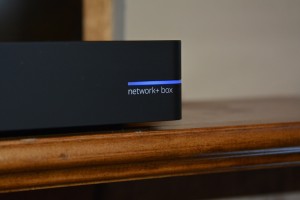
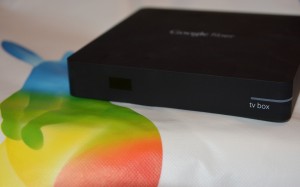
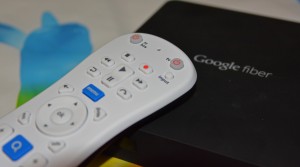
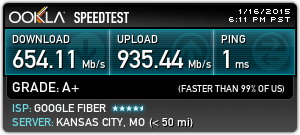
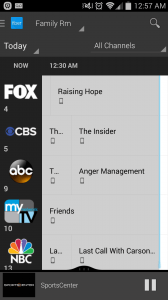
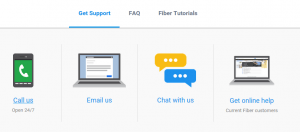













21 thoughts on “Review: Is Google Fiber Worth the Hype?”
As far as speed goes — files do download quicker but the overall experience in surfing the Internet is not much different. If you are wireless your speed will be considerably less than a direct connection – one HUGE thing that GF does not tell you up front.
All the people from GF and their vendors have all been very kind. It’s wonderful to talk to a real English speaking person in CS.
The $70/month charge for the Internet is a little too much.
The rule for wireless speed is that it will be as fast as your slowest connection. The main three things that will affect this is:
a) Your plan
b) modem and router
c) whatever device you are trying to connect
How far away you are from the router as well as walls in between will affect this as well, but lets just say you are testing everything right next to your router, nothing in between.
So let’s say you have are comparing an iphone 4 to an iphone 6 on the same wifi connection. The iphone 6 will have a faster connection than the iphone 4, just simply due to the technology in it. Wireless technology is getting better as time goes on, but as of right now, the fastest that I’ve seen is around 70 Mbps. The average I’ve seen is between 25-50 Mbps. (Not sure what the current speeds are for wireless devices now, could be a bit higher. Haven’t looked into it, but no matter what, it will be less than wired.)
That being said, I haven’t tried GF yet. It may be coming to Tampa, FL, so I could possibly try it soon in the future. I’m currently paying a little over $100 for 50 Mbps up and down with Verizon Fios, so the $70 one doesn’t seem that bad. My question is how reliable it is considering I work from home and need the internet.
– The boxes have to be consistently rebooted, either soft or hard reboot using a pencil or pen. It get’s frustrating that almost every morning, you wake up to system that has frozen sometime during the evening. I don’t have much insight to what new technology is being run on the Storage or Network boxes, but’s not a very stable environment, especially when other devices are trying to capture bandwidth at the same time. Whaaaat? Where’s all this huge bandwidth difference? Our family does not see it, at all.
– The remotes cant be used in dark rooms, petty complaint, but seriously – you can’t use the thing unless the lights are on.
– The remotes frequently require a pairing and un-pairing because they too freeze all the time. Even with new batteries, we find ourselves with remotes that have stopped working, or just the volume works, or the guide comes up and nothing is operational , we have to resort the GF self help guides to punch in some silly code to “re-set” the remote and hope to get it working again.
– The bandwidth and network stability is iffy at best. I’ve loaded the Speedtest apps on my LG and have run tests all over the house and have yet to see bandwidth that was any different then my previous TWC high speed connection.
If two or more devices are connected to wifi, desktop or laptop machines will suffer. I have heard that to really experience the marketed GF speed, you need newer desktop machines with higher CPU processing and graphic card upgrades. Long story short, not a major improvement in bandwidth considering our set up includes a Fiber connection up and downstairs. We have two wifi hubs and no drastic improvement.
– The TV interface is okay, but doesn’t have a real “Google” feel to it. When we got it installed, we were told that we’d have the ability to stream music and files from our home PCs, not the case. An older version of Fiber boxes had that capability and some point in time it was phased out. That sucks, I’ve always had the ability to stream files over the network, oh well, guess with Fiber it wasn’t a functional priority.
– Not having AMC, how in the world does GF not offer the most popular channel in the universe?? I have seen other people complain about this as well. As far as I know, they have no plans to pick it up either, seems like a major fail in the channel offering dept. Thank god for Amazon Prime, Hulu, etc.
– You get a terrabyte of storage added to an existing Google Drive account – yeah, that’s nice and all, but constantly fighting the network boxes negates any benefit from having more Drive space.
Maybe we’re the lucky ones, but we’ve had more issues with GF then we ever had with TWC in our area of Kansas City.
I have not been too impressed as of November 2015.
course
Technically, you could disable its wireless settings, and purchase an access point – or a router if you disable its routing features – that supports AC. I could do that pretty easily if I wanted to speed $100 to do it, but I wouldn’t recommend it to an everyday user.
It would be easier if the box just supported AC.
I agree, though, that it would just be easier if the box came with AC capability. I am told that the newer ones do have it but it is hit or miss on new KC installations.
I give free Google Fiber two thumbs down… be careful before dropping the service you’re paying for.
What features are you having issues with on the Xbox One? The only issue I have had is the channel lineup/OneGuide is occasionally off – the only channel I really notice being wrong is ESPN.
I do agree I’d like to see wider support, though.
Also, I suspect the cable and telcos would only compete in neighborhoods where Google lays fiber. A few years ago, the city gave an independent cable provider permission to serve one neighborhood and compete against the cable company. Of course, the cable company lowered their price just for that one neighborhood so the independent never got off the ground and pulled out after a few months. As expected, prices shot back up!
Verizon FiOS isn’t Google speed but once you get out of the slow lane you don’t want to go back!